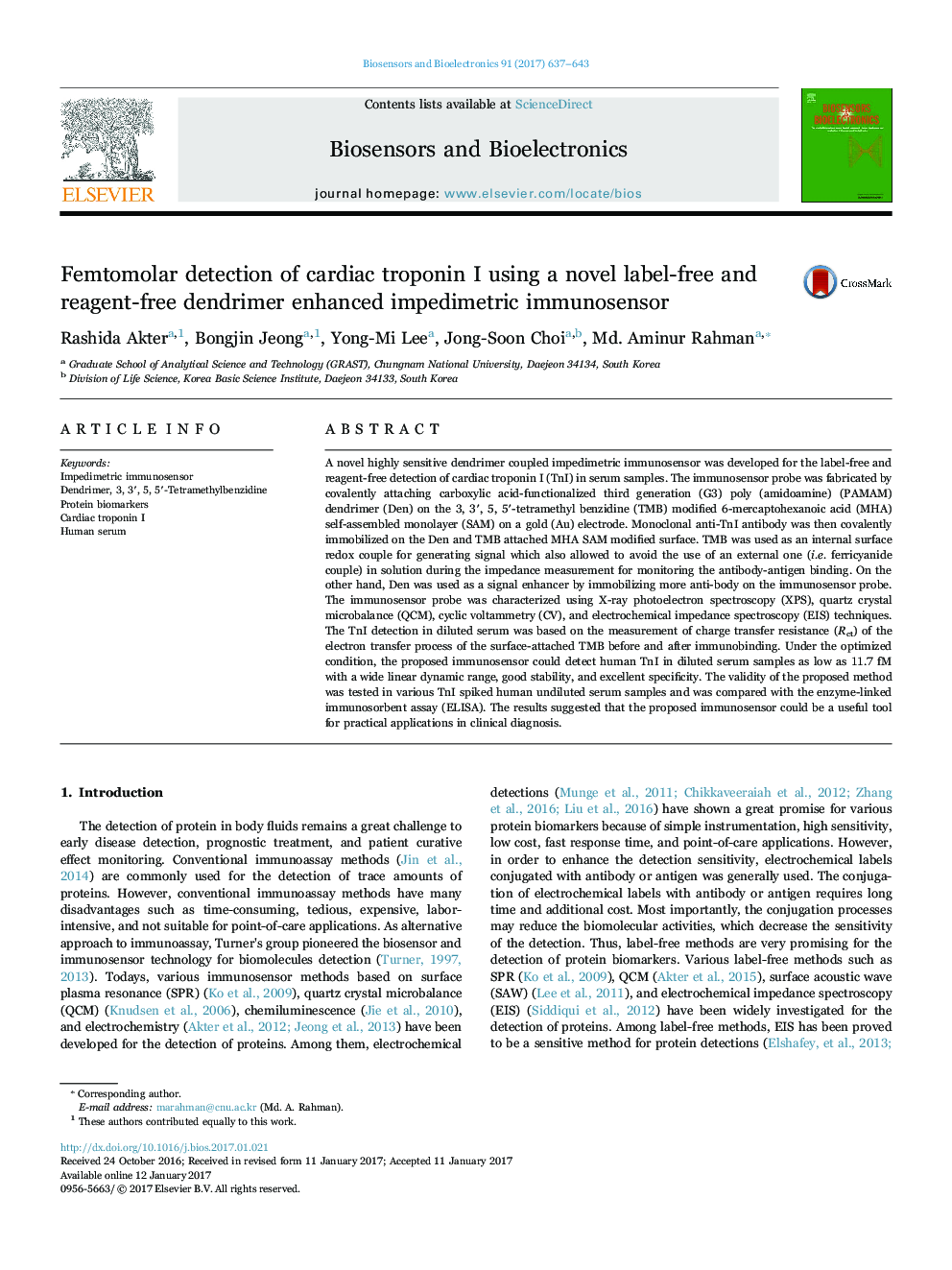| Article ID | Journal | Published Year | Pages | File Type |
|---|---|---|---|---|
| 5031200 | Biosensors and Bioelectronics | 2017 | 7 Pages |
â¢Impedance-based cardiac troponin I immunosensor was fabricated.â¢Reagent-less and label-free detection was developed using tetramethylbenzidine.â¢Enhanced detection was achieved using Dendrimer at the probe.â¢Detection limit of troponin I in a diluted serum was as low as 11.7 fM.
A novel highly sensitive dendrimer coupled impedimetric immunosensor was developed for the label-free and reagent-free detection of cardiac troponin I (TnI) in serum samples. The immunosensor probe was fabricated by covalently attaching carboxylic acid-functionalized third generation (G3) poly (amidoamine) (PAMAM) dendrimer (Den) on the 3, 3â², 5, 5â²-tetramethyl benzidine (TMB) modified 6-mercaptohexanoic acid (MHA) self-assembled monolayer (SAM) on a gold (Au) electrode. Monoclonal anti-TnI antibody was then covalently immobilized on the Den and TMB attached MHA SAM modified surface. TMB was used as an internal surface redox couple for generating signal which also allowed to avoid the use of an external one (i.e. ferricyanide couple) in solution during the impedance measurement for monitoring the antibody-antigen binding. On the other hand, Den was used as a signal enhancer by immobilizing more anti-body on the immunosensor probe. The immunosensor probe was characterized using X-ray photoelectron spectroscopy (XPS), quartz crystal microbalance (QCM), cyclic voltammetry (CV), and electrochemical impedance spectroscopy (EIS) techniques. The TnI detection in diluted serum was based on the measurement of charge transfer resistance (Rct) of the electron transfer process of the surface-attached TMB before and after immunobinding. Under the optimized condition, the proposed immunosensor could detect human TnI in diluted serum samples as low as 11.7 fM with a wide linear dynamic range, good stability, and excellent specificity. The validity of the proposed method was tested in various TnI spiked human undiluted serum samples and was compared with the enzyme-linked immunosorbent assay (ELISA). The results suggested that the proposed immunosensor could be a useful tool for practical applications in clinical diagnosis.
